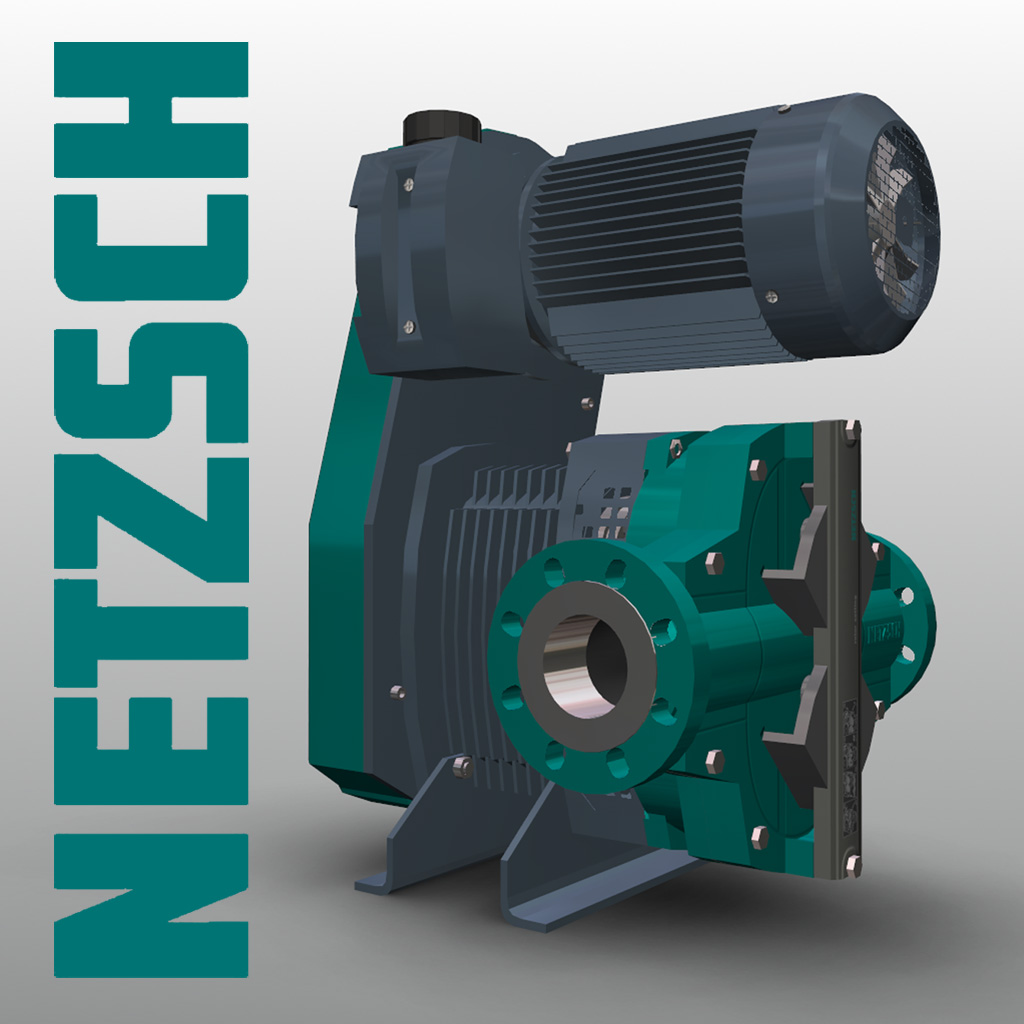By Jeff Helm, Western Regional Sales Manager, NETZSCH Pumps North America, LLC
New technology has entered the market that rethinks the traditional rotary lobe pump design and has pushed it into a new paradigm. By reducing maintenance, energy costs and increasing operational uptime, the new technology reduces total cost of ownership (TCO), which is a critical concern to pump owners and operators. The NETZSCH TORNADO T2 rotary lobe pump, is redesigned to increase reliability, maintenance, and performance, while reducing TCO.
Traditional design meets new thinking
A rotary lobe pump is a positive displacement pump, with the pumping action generated by the counter-rotation of two rotors within the pump chamber, which are synchronized externally. The media enters the pump chamber through the inlet port and is carried around the chamber by the rotors to the outlet port where it is discharged. Traditional rotary lobe pumps use rubber-covered lobes that rotate inside a metal housing, often with bolted-in metal wear liners.
Recently, NETZSCH engineers decided to rethink this convention by asking, “Why not reverse the construction by making the lobes in steel and the housing in rubber?” They considered this novel concept during design of a new rotary lobe pump called the TORNADO T2. These engineers were looking for a way to combine the wear resistance and simple metal-rotor/rubber-stator construction of a progressing cavity pump with traditional rotary lobe pump technology. During the entire pumping cycle, only elastomer and metal component surfaces interface within the pump – eliminating the excess wear and heat generated from elastomer-to-elastomer contact that sometimes damages traditional rotary lobe pumps.
By using dissimilar materials for the static and dynamic pump head components, the elastomeric surfaces are subjected to lower dynamic loading, resulting in less plastic deformation and stress, reducing wear and extending operational life.
As an added advantage, the new design does not require O-rings or gaskets, resulting in a durable and robust construction along with simplicity and ease of maintenance.
Another typical rotary lobe pump belief is that a rotary lobe pump could not be built without a set of timing gears. The new thinking instead uses a single, synchronous toothed timing belt. This eliminates the maintenance-intensive and costly gearbox and the oil required to run it, lowering operational costs and demonstrating environmental awareness and sustainability. The idea was adapted from technology commonly used in the automotive industry.
The tooth belt drive system also improves maintenance by producing greater accuracy of synchronization, eliminating timing gears and oil lubrication, generating less heat, and demonstrating quieter operation. This belt both drives and synchronizes the pump shafts. If required, the drive can be used in conjunction with a frequency converter to achieve a specific flow rate or range of flow rates.
The next new design solution was for minimizing pulsation while still using durable and simple bi-lobe rotors that are better for solids handling. Engineers developed a unique pulsation reduction system that uses channels molded into the liner’s rubber walls to release the lobe energy and dampen pulsation. This is the equivalent of using a multi-lobe rotor, meeting customer demands for shear sensitive product conveyance and no pulsation downstream.
The design of the pump housing includes integrally cast round flanges. Having full flange-to-flange access when servicing the pump offers maintenance personnel more room to access pump internals without the need to disassemble piping. A unique seal design greatly reduces the chance of leaks and catastrophic pump failure.
This full “service-in-place” design supplies easy access to the mechanical seals, rotors, and liners. It makes timing the lobes easier with a tool designed especially for the TORNADO T2 that radially and axially aligns the lobes to set the timing of the pump in less time than it takes to look for the tools to work on conventional lobe pump with timing gearbox.
The single timing belt drive, which eliminates the need for a second reduction component to the pump assembly, also reduces maintenance. There is no oil to replace or maintain and there are no timing gears to fail, significantly decreasing the need for pump replacement.
By challenging conventional wisdom, the new pump design goes a long way toward resolving typical customer pain points, ensuring maximum operational performance, high reliability and durability, ease of maintenance, and most especially, low total life cycle cost.




